What to Know Before Buying Bar Stools
It’s hard to imagine any kitchen without some sort of bar stool. Bar stools have become positively ubiquitous — and for good reason. They allow family, friends and even strangers to join us in the kitchen. Every school night, my sons did their homework sitting on a bar stool at our counter, where they could finagle help whether it was needed or not. Many a night, dear friends would perch on those same stools, keeping us company while we cooked. And then it was our gaggle of grandchildren who clamored onto the stools, eager to be right in the middle of what was happening.
So what’s new in the world of bar stools? I asked Lee Honigsfeld, vice president at Pastel Furniture (which has long been one of my favorite sources for stools), for his insight and expertise.
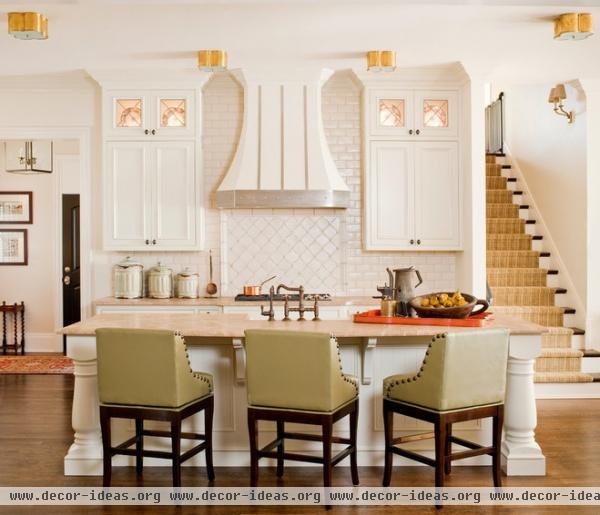
First, let’s cover a bar stool basic: height. In my years as a retail designer, I learned there is lots of confusion about this subject, so let’s try to clear that up.
“Bar stool” is an overarching term that refers to stools that come in three primary heights: counter, bar and spectator (sometimes called stadium). Counter stools, like these, are designed to be paired with a standard-height counter, which is 36 inches tall. So a counter stool’s seat ranges in height from 24 to 26 inches.
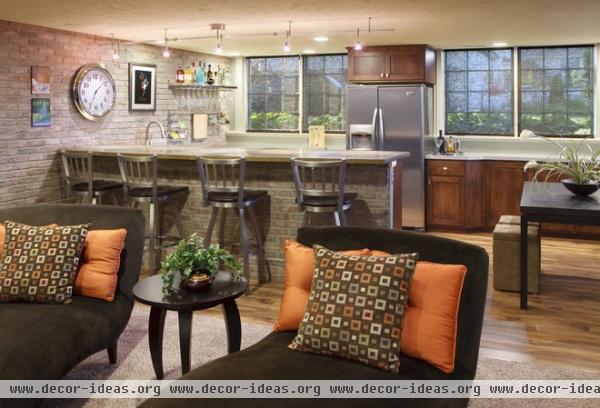
Bar stools are meant to be used at the portion of a kitchen counter that is stepped up (usually by 6 inches) from the rest of the counter, usually this portion is 42 inches high rather than 36. Bar-height stools are also the most common match for pub tables. Their seat height is normally 30 inches.
Jailhouse Back Wood Seat Swivel Stool: Counter Stool Store
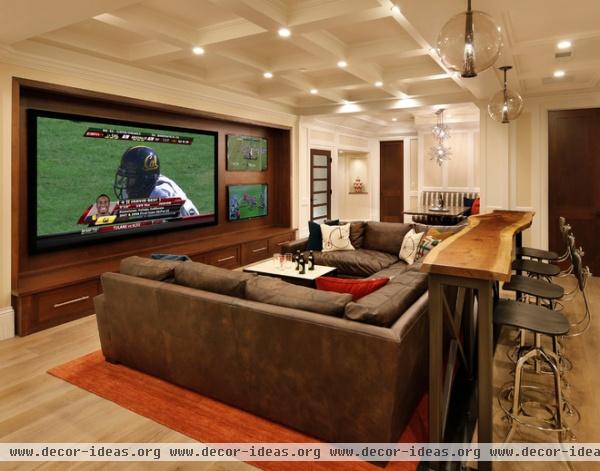
Spectator or stadium stools are the tallest. They are designed for use at a 48-inch-high table or counter, so their seat height ranges from 34 to 36 inches tall. This variety of stool is often used when extra height is needed, like for television viewing.
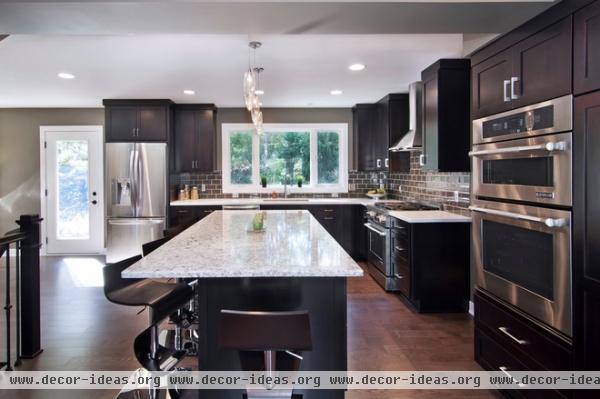
All these different heights are fabulous, until you move. Personally, I never managed to move from one house to another without the required stool height’s changing. And the industry has figured this out. Lee Honigsfeld tells me that adjustable stools are becoming increasingly popular in the bar stool market. With an adjustable stool, one size can fit all types of homes, because its height can change from shorter to taller.

You can change the height of an adjustable stool with a lever, like on this model …
Fiore Bar Stool: LumiSource
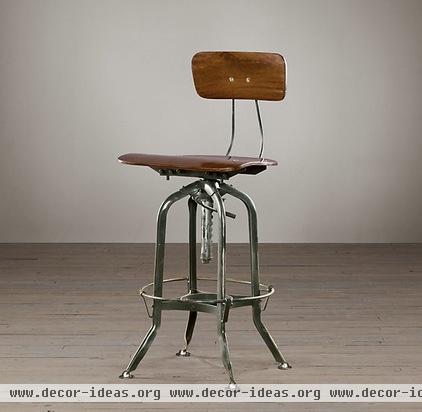
Vintage Toledo Bar Chair, Antiqued Green - $350 … or with a giant screw mechanism, like on this one. An adjustable stool is a seriously good idea, and one that could singlehandedly dry up the used-bar-stool market.
Vintage Toledo Bar Chair: Restoration Hardware
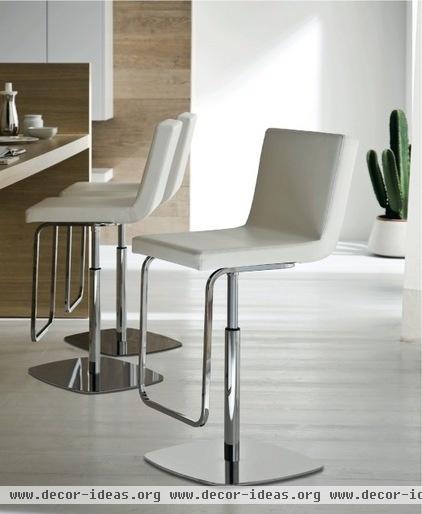
Swivel stools also remain very popular. Well-made stools can be heavy, so choosing one that swivels saves having to pull it away from the counter to get in, and then having to scoot it back up to the counter so you can reach your plate — a process that’s hard on your back, the floor and your dignity.
Afrosg bar stool: Imagine Living
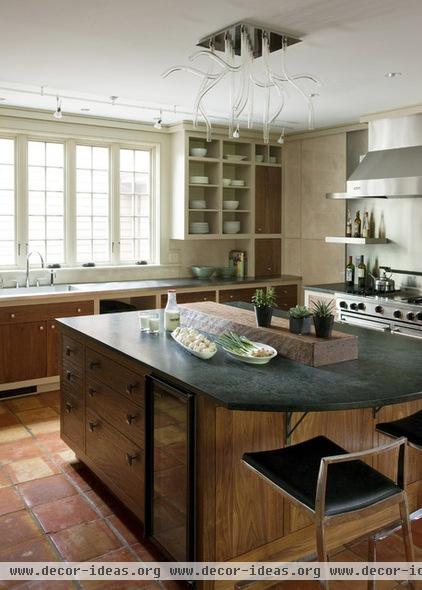
Brushed stainless steel is a very hot look in bar stools because it works well in many homes, as opposed to chrome, which may be more narrowly suited to contemporary.
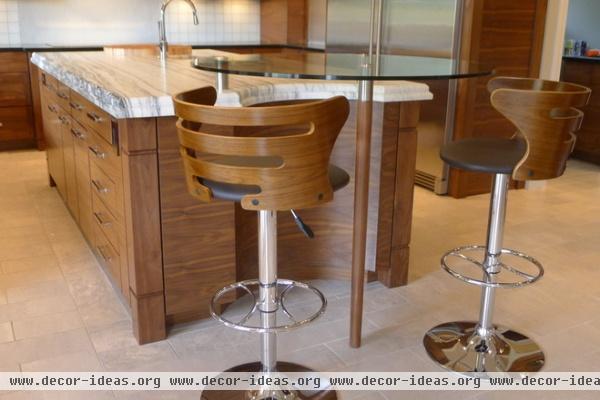
Mixing materials, as in these walnut and chrome bar stools, creates another look that will readily work in a myriad of styles. I love this, as mixing materials is a time-honored method of bringing comfort and warmth to decor.
Modern Walnut Wood/Chrome Hydraulic Bar Stool: Overstock.com
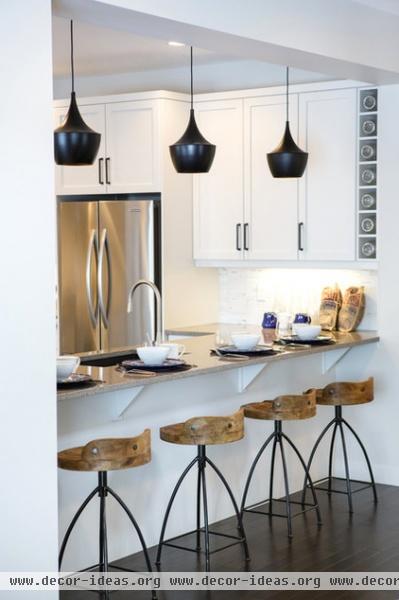
Honigsfeld is finding that yet another up-and-coming trend is rustic urban. This style features mixed materials — rough, unsophisticated finishes bring the rustic, and clean, spare lines bring the urban — as in these Arteriors wooden counter stools.
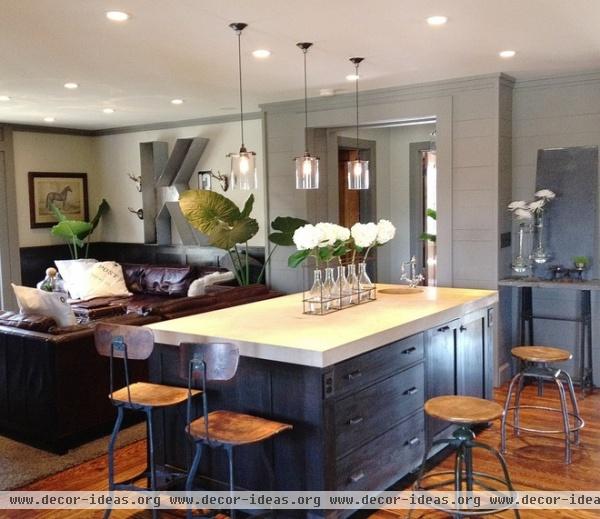
Still popular is vintage industrial. (Is this the old name for rustic urban?) Honestly, all these stools that mix materials and styles are a great choice for your home. They will almost always work, no matter where you take your design.
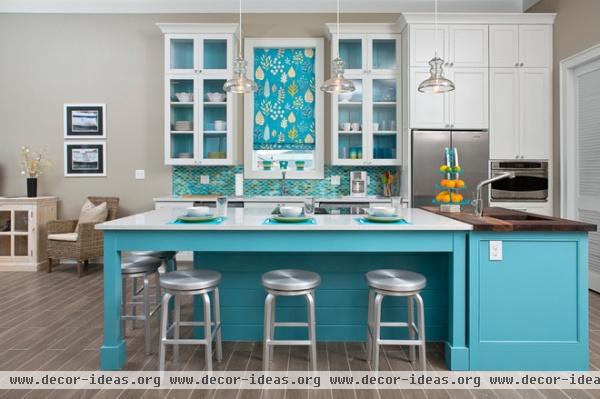
Enough on style; what about comfort? Comfort will depend on your personal taste, but you also need to consider whether small children or elderly people are going to be primary users of your stools. Backless stools like these can be perfect where space is limited, or where a minimalistic look is wanted. But bear in mind that most adults will not want to sit there for long, and young ones might find it tempting to lean backward.
Spin Bar Stool: Crate & Barrel
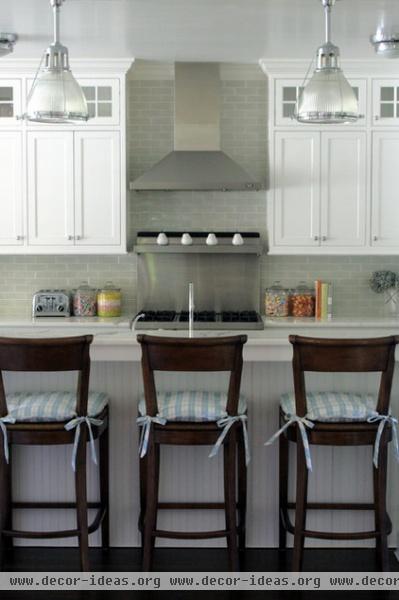
Tie-on cushions are a fun style statement, plus they pad what can be the hard seat of a wood or metal stool. But if small children will be using these, watch closely. Youngsters can wiggle around in such a way that the cushion (and thus, the child) hangs precariously off the chair.
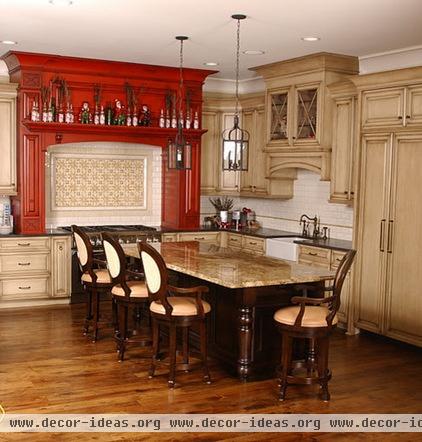
The only caveat on swivel stools is if your model has arms. Arms are fabulous for comfort … but if you have young children, you may want to think twice. My grandchildren had a good ol’ time swiveling in our iron bar stools, while the arms kept bashing into the edge of the granite countertop. Breathing fire and brimstone didn’t help; the joy of swiveling back and forth could not be overcome.
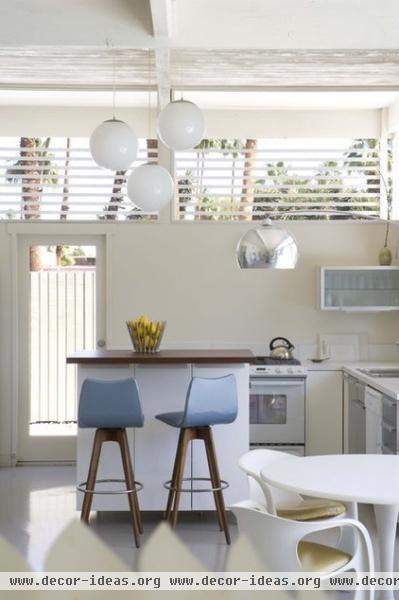
Footrests are absolutely critical to comfort, especially for adults. After all, do you like to sit on a chair where your legs dangle with no support?
Bar stools: vintage
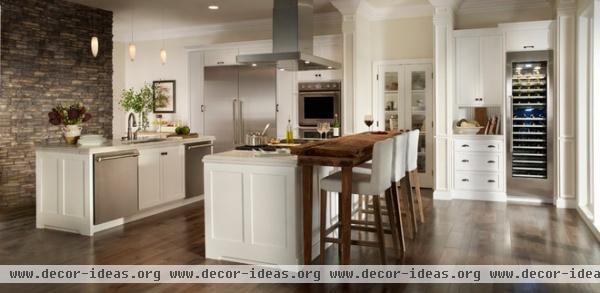
Finally, if you have a kitchen that does not have an overhang for stools, but you love the concept, consider this imaginative solution. Put a tall table like this one up against your counter and voilà! Instant bar, instant homework station, instant wine and appetizer headquarters, instant welcome.
More: 8 Inventive Takes on the Breakfast Bar












